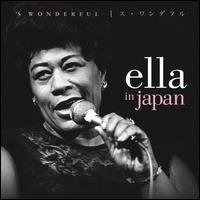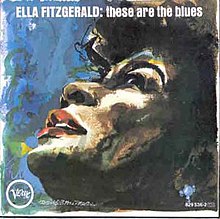
David Roy Eldridge, nicknamed "Little Jazz", was an American jazz trumpeter. His sophisticated use of harmony, including the use of tritone substitutions, his virtuosic solos exhibiting a departure from the dominant style of jazz trumpet innovator Louis Armstrong, and his strong impact on Dizzy Gillespie mark him as one of the most influential musicians of the swing era and a precursor of bebop.

Harry "Sweets" Edison was an American jazz trumpeter and a member of the Count Basie Orchestra. His most important contribution was as a Hollywood studio musician, whose muted trumpet can be heard backing singers, most notably Frank Sinatra.

Charles James Shavers was an American jazz trumpeter who played with Dizzy Gillespie, Nat King Cole, Roy Eldridge, Johnny Dodds, Jimmie Noone, Sidney Bechet, Midge Williams, Tommy Dorsey, and Billie Holiday. He was also an arranger and composer, and one of his compositions, "Undecided", is a jazz standard.

Porgy and Bess is a studio album by jazz vocalist and trumpeter Louis Armstrong and singer Ella Fitzgerald, released on Verve Records in 1959. The third and final of the pair's albums for the label, it is a suite of selections from the George Gershwin opera Porgy and Bess. Orchestral arrangements are by Russell Garcia, who had previously arranged the 1956 jazz vocal recording The Complete Porgy and Bess.

Rhythm Is My Business is a 1962 studio album by the American jazz singer Ella Fitzgerald. The album was recorded with a big band and arranged and conducted by the American R&B organist Bill Doggett.

Ella at Duke's Place is a 1965 studio album by Ella Fitzgerald and Duke Ellington, accompanied by his Orchestra. While it was the second studio album made by Fitzgerald and Ellington, following the 1957 song book recording, a live double album Ella and Duke at the Cote D'Azur was recorded in 1966. Ella at Duke’s Place was nominated for Best Female Pop Vocal Performance at the 1967 Grammy Awards.

At the Opera House is a 1958 live album by Ella Fitzgerald. The album presents a recording of the 1957 Jazz at the Philharmonic Concerts. This series of live jazz concerts was devised by Fitzgerald's manager Norman Granz; they ran from 1944 to 1983. Featured on this occasion, in 1957, are Fitzgerald and the leading jazz players of the day in an onstage jam session. The first half of the 1990 CD edition includes a performance that was recorded on September 29, 1957, at the Chicago Opera House, whilst the second half highlights the concert recorded on October 7, 1957, at the Shrine Auditorium, in Los Angeles. The original LP obviously included only the mono tracks (#10-18).

Ella Swings Lightly is a 1958 studio album by the American jazz singer Ella Fitzgerald, recorded with the Marty Paich Dek-tette. Ella also worked with Marty Paich on her 1967 album Whisper Not. The album features a typical selection of jazz standards from this era, songs from musicals like Frank Loesser's If I Were a Bell, and a famous jazz instrumental vocalised by Ella, Roy Eldridge's Little Jazz.

Ella at Juan-les-Pins is a 1964 live album by Ella Fitzgerald, accompanied by a quartet led by Roy Eldridge on trumpet with the pianist Tommy Flanagan, Gus Johnson on drums and Bill Yancey on bass. Val Valentin was the recording engineer, cover photo by Jean-Pierre Leloir. The original 1964 album featured 12 songs, highlights of two concerts Fitzgerald performed on the 28 and 29 of July 1964 at the fifth annual Festival Mondial du Jazz Antibes in Juan-les-Pins, France. In 2002 Verve re-issued this album, including all the performances from both evenings.

The Count Basie Orchestra is a 16- to 18-piece big band, one of the most prominent jazz performing groups of the swing era, founded by Count Basie in 1935 and recording regularly from 1936. Despite a brief disbandment at the beginning of the 1950s, the band survived long past the big band era itself and the death of Basie in 1984. It continues under the direction of trumpeter Scotty Barnhart.

Ella and Basie! is a 1963 studio album by Ella Fitzgerald, accompanied by Count Basie and his orchestra, with arrangements by Quincy Jones. It was later reissued with slightly different cover art as On the Sunny Side of the Street.

Ella and Louis Again is a studio album by Ella Fitzgerald and Louis Armstrong, released in 1957 on Verve Records. It is the sequel to their 1956 album, Ella and Louis. In contrast to their previous collaboration, this album features seven solo vocal tracks by either Armstrong or Fitzgerald amongst its dozen duet tracks. It was reissued as part of a two-compact disc set in 1995, and in The Complete Ella Fitzgerald & Louis Armstrong on Verve in 1997. It was recorded at Radio Recorders and Capitol Studios, Hollywood.

Ella and Louis is a studio album by Ella Fitzgerald and Louis Armstrong, accompanied by the Oscar Peterson Quartet, released in October 1956. Having previously collaborated in the late 1940s for the Decca label, this was the first of three albums that Fitzgerald and Armstrong were to record together for Verve Records, later followed by 1957's Ella and Louis Again and 1959's Porgy and Bess.

The Complete Ella Fitzgerald & Louis Armstrong on Verve is a compilation album released on Verve Records in 1997. It comprises three compact discs containing the three studio albums made for the label by Ella Fitzgerald and Louis Armstrong, released during 1956 through 1958.
Joseph Dwight Newman was an American jazz trumpeter, composer, and educator, best known as a musician who worked with Count Basie during two periods.

Jazz at Santa Monica '72 is a 1972 live album by the American jazz singer Ella Fitzgerald, recorded at the Santa Monica Civic Auditorium accompanied by a jazz trio led by the pianist Tommy Flanagan, and the Count Basie Orchestra.
Discography for jazz double-bassist and cellist Ray Brown.
Alvin Stoller was an American jazz drummer. Though he seems to have been largely forgotten, he was held in high regard in the 1940s and 1950s. He was best known for playing drums on both Mitch Miller's recording of "The Yellow Rose of Texas" and Stan Freberg's parody of Miller's recording.

Ella in Japan: 'S Wonderful is a 1964 live album by the American jazz singer Ella Fitzgerald, recorded in Tokyo, Japan. Norman Granz sold the Verve label to MGM Records in 1961, but continued to manage her career and produce Ella Fitzgerald's recordings. Granz supervised frequently live concert tours, planning several live projects for release on record. In late January 1964 work began on an album, called Ella In Nippon, the album did not reach past the post-production stage, remaining uncompleted and unreleased for 47 years. Tracks 1 to 12 on this 2011 release are the tracks Norman Granz mixed for the unreleased album Ella In Nippon.

The Smithsonian Collection of Classic Jazz is a six-LP box set released in 1973 by the Smithsonian Institution. Compiled by jazz critic, scholar, and historian Martin Williams, the album included tracks from over a dozen record labels spanning several decades and genres of American jazz, from ragtime and big band to post-bop and free jazz.

















